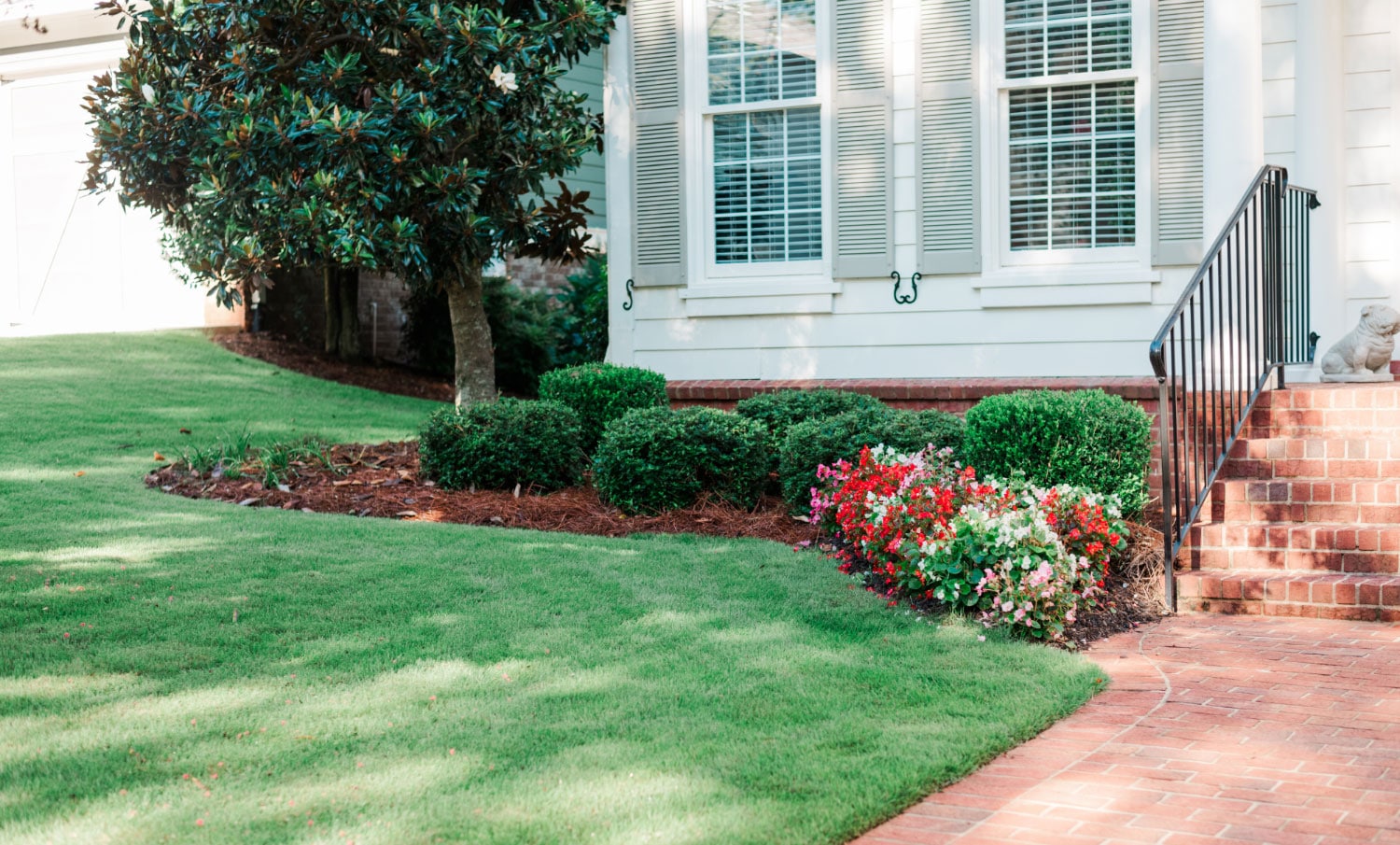When spring has sprung and birds are chirping, we immediately begin yearning for lush green grass. “This is the year I have the yard I’ve always wanted,” we think to ourselves. Dreams of dense, dark green grass behind the patio is enough to bring a smile to anyone’s face, but that means we have to grow grass in the thin or bare spots. Sod can be expensive, and there are bags of seed available at the big hardware store down the street, but should you seed? Read on to learn about seeded vs. sodded varieties of grass, the causes for thin or bare spots, and how seeding affects weed control.
Seeded and Sodded Varieties Aren’t the Same
Bermuda and Zoysia are species names that represent many varieties, the most desirable of which are typically sterile. It’s important to start here. While Bermuda and Zoysia varieties that produce seed exist, they often don’t possess the most desirable characteristics found in the hybrids we know and love. Hybridization results in desired features such as:
- thin blades
- exceptional hardiness
- health when cut short
- optimized recovery potential.
While varieties such as Tifway-419 Bermuda or Zeon Zoysia may create seedheads, the seeds aren’t viable.
Sod farms often produce these turf types using a few methods of propagation. These processes are labor and input intensive and aren’t generally practical for residential and commercial applications. The sod produced, however, is arguably the most reasonable product to use to establish a healthy lawn.
If you’re willing to accept the reality that the seeded varieties may vary greatly from the turf present in your yard, let’s consider some of the other trials you may face.
The Importance of Addressing the Cause of the Bare Spots
Troubling conditions that cause thinness or bare spots in existing turf will often limit or thwart the establishment of seed. In ideal conditions, turfgrasses are generally resilient. Proper light availability, fertility inputs, mowing techniques, watering schedules, and compaction relief are foundational considerations. If all are well-minded, varieties of Bermuda and Zoysia grow aggressively. When addressing bare or thin spots with sod or seed, correcting the cause and properly preparing the site are imperative. Without remediation, establishment is questionable, and long-term success is unlikely.
Seeding Means an Extended Pause in Weed Control
When conditions are optimal for grass seed germination, they’re also optimal for weed seed germination. Appropriately applied pre-emergent weed control products are a cornerstone of any weed management program. The purpose of these products is to stop root formation as weeds begin to grow, but pre-emergents affect all plants, including our desired grasses.
If your intention is to seed or sod, we must cease the application of pre-emergent weed control products in preparation and during the establishment period of turf. Root establishment from seed takes an exceptional amount of time and varies wildly based on environmental conditions.
Treating weeds with post-emergent weed control products also can’t be done until the turf is established. A quick look at the label on many weed control products include precautionary statements regarding planting intervals, especially when applied in combination with surfactants. Seedlings are exceptionally sensitive and can even be injured by products considered safe on a given species.
Important Takeaways:
- The varieties available in seed aren’t the same as the hybrids we know and love available as sod. Turfs such as Tifway-419 Bermuda and Zeon Zoysia are sterile, meaning their seed isn’t viable. They are generally propagated via sprigs and sold for residential and commercial use as sod.
- Before spending money on seed or sod, addressing the cause of bare or thin spots and doing proper site prep are imperative for success.
- Seeding and sodding both require cessation of weed treatment, both pre- and post-, but seeding extends that period substantially.








